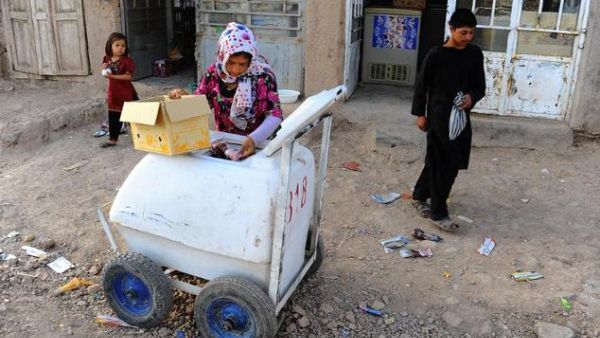The government in Kabul has failed to protect tens of thousands of children, some as young as 5, from hazardous conditions in the workplacein violation of labour laws, an international rights group alleged on Thursday.
In a 31-page report, “‘They Bear All the Pain’: Hazardous Child Labor in Afghanistan,” Human Rights Watch has documented how children do dangerous jobs in the carpet industry; as bonded labour in brick kilnsand as metal workers.
They rigorous jobs could result in illness, injury, or even death, due to hazardous working conditions, poor enforcement of safety and healthstandards. Many such children combine the burdens of a job with school, or forego education.
Phelim Kine, deputy Asia director at Human Rights Watch, remarked:“Thousands of Afghan children risk their health and safety every day to put food on the family table.”
Kine urged the Afghan government to do a better job of protecting its children – and the country’s future – by enforcing the law against dangerous work for children.
Government institutions responsible for enforcing the law often lacked the capacity to inspect workplaces, with the result that children working in prohibited jobs went unnoticed and unprotected, the report said.
In 2014, the New York-based group added, the Afghan government published a list of 19 hazardous occupations prohibited for children. These jobs include carpet weaving, metal workand brick making.
A brick kiln manager in Kabul told Human Rights Watch: “There are children here, starting from 10 years or 8 years of age to 15 or 16… They wake up at 3am and work until about evening… They complain of pain, but what can they do? The kids are here to make a living. They bear all the pain to do all the work.”
A 13-year-old metal worker in Kabul said: “My fingers have been cut from the sharp edges of the metal and slammed by the hammer. My finger has also been caught in the trimming-beading machine. When your nail gets hit by a hammer or caught in the machine, it becomes black and eventually falls off.”
“Eradicating child labour in Afghanistan is not feasible so long as extreme poverty continues, but the government and its donors can take steps to protect children from the risks associated with working in particularly dangerous or unhealthy conditions.”
HRW called for increasing the number of labour inspectors to adequately cover the entire country; giving priority to monitoring hazardous sectors; and offering the Afghan government targeted technical assistance in implementing regulations against child labor.
“Both the government and its foreign donors should devote more resources to expanding educational support to all working children,” the report stressed, seeking urgent steps to protect children from the risks associated with working in particularly dangerous conditions.








